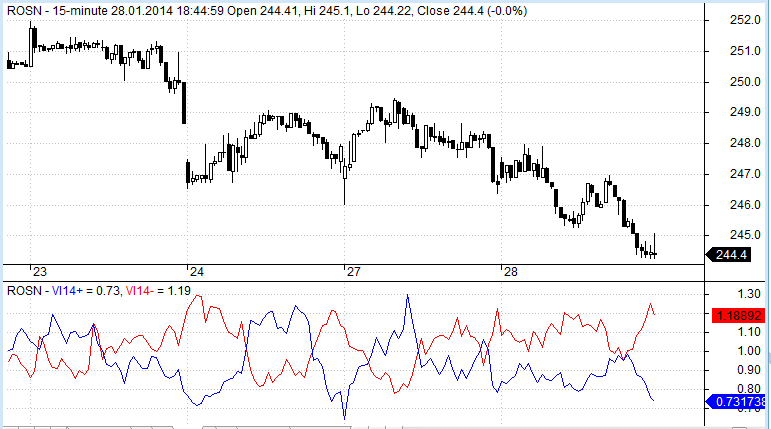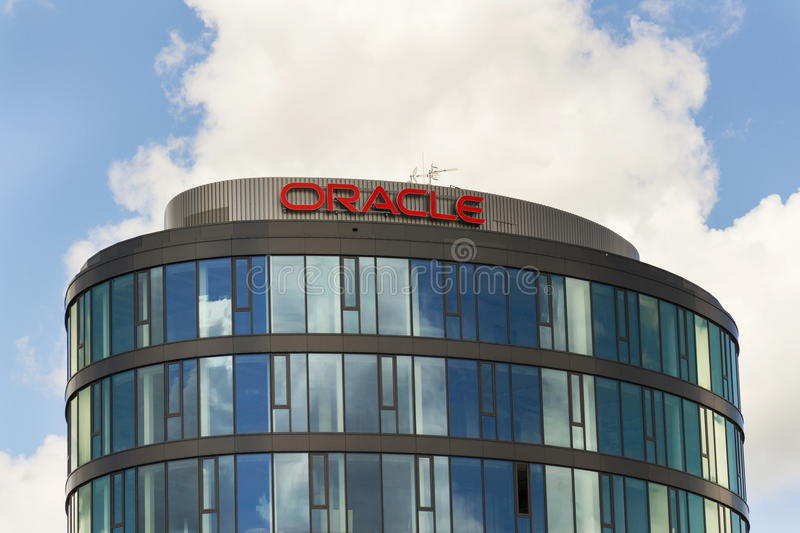
The operating cash flow ratio is a measure of short-term liquidity by calculating the number of times a company can pay down its current debts with cash generated in the same period. The ratio is calculated by dividing the operating cash flow by the current liabilities. A higher number is better since it means a company can cover its current liabilities more times.
If volume is unusually high or low, liquidity may be unusually high or low as well. High liquidity is also important for running an efficient market – that is, a market where prices reflect all available information. When there’s plenty of liquidity, shares can readily change hands and prices can move in response to new information. High liquidity is critical to enabling you to get in and out of trades quickly. With sufficient liquidity, you can instantly or nearly instantly buy shares at one price and sell them at another price.
- The greater their liquid assets (cash savings and investment portfolio) compared to their debts, the better their financial situation.
- In other words, inventory is not as liquid as the other current assets.
- Even when an OTC stock is very liquid, it can have liquidity issues during large price movements.
- Any research provided does not have regard to the specific investment objectives, financial situation and needs of any specific person who may receive it.
If a company has a high share turnover it will have liquid company shares. A stock with market liquidity is readily available for purchase or sale. Another way to gauge a stock’s market liquidity is to examine the difference between the asking price and the ultimate sale price — also known as the bid-ask spread. If the price difference is insignificant, then the market for the stock is said to be fairly liquid.
Nigeria cutting agro-export delay as Lilypond terminal begins full operations
Liquidity is a major factor traders use to assess an investment. Before investing in a stock, investors take various things into consideration, such as growth, return, risk, and liquidity. Though usually overshadowed by interest rate hikes, this alternative approach to fighting inflation works by allowing the Fed’s bond asset holdings to mature without reinvesting the proceeds. While the central bank isn’t selling bonds outright, running off its balance sheet has a similar effect of reducing liquidity by removing a large buyer from the market. If you are a forex
trader, it is important to understand the concept of liquidity and how it can
affect your trading.
For some investors and for some circumstances, illiquid assets actually hold an advantage over liquid assets. CD’s often have a higher rate of return than a bank account. If a company or individual can sacrifice liquidity, it may generate higher returns from the asset. Liquidity for companies typically refers to a company’s ability to use its current assets to meet its current or short-term liabilities. A company is also measured by the amount of cash it generates above and beyond its liabilities.

There are tons of buyers and sellers, so raising or lowering a stock’s price by a few cents is typically enough to spur trading activity. When liquidity is low, though, you might not be able to buy or sell shares quite so easily. Since buying and selling activity is low overall, it could potentially take several minutes or longer for someone to accept your offer to buy or sell shares. That’s a big problem for intraday trading, when trade speed often makes the difference between a profit and a loss. High levels of liquidity arise when there is a significant level of trading activity and when there is both high supply and demand for an asset, as it is easier to find a buyer or seller. If there are only a few market participants, trading infrequently, it is said to be an illiquid market or to have low liquidity.
Differences Between Stock Market Liquidity and FX Liquidity
Though yields have climbed in recent months — some of which is on account of interest rate hikes — the overall impact of QT on the marketplace has been limited so far. The Fed’s debt runoff also removes it as a significant participant in the Treasury market, with commentators speculating that this would cause a surge in yields and adversely impact equities. Where once the Fed’s portfolio held around $8.4 trillion in assets, the institution’s System Open Market Account now shows that this has fallen to just under $7.4 trillion. Please log in to your account or sign up in order to add this asset to your watchlist.

The easier it is to buy and sell an asset, the more liquid it is. Liquidity is one of the most fundamental concepts in finance and business in general. It is even more fundamental than the fundamentals of investment analysis, such as revenue, earnings, and profit margins when trying to assess a company’s value and potential for growth.
Download the app to start investing now
Otherwise, an investor might have to calculate it themselves, using the info reported on a company’s financial statements or in its annual report. The more savings an individual has the easier it is for them to pay their debts, such as their mortgage, car loan, or credit card bills. This particularly rings true if the individual loses their job and immediate source of new income. The more cash they have on hand and the more liquid assets they can sell for cash, the easier it will be for them to continue to make their debt payments while they look for a new job.
- The best way to gauge liquidity is by looking at daily trading volume.
- For instance, it can be tough to sell during a panic and tough to buy during a squeeze.
- A smaller penny stock with a price of 10 cents may average 3 million shares per day, but the average daily turnover would be much lower at $300,000.
- In this example, the company’s net working capital (current assets – current liabilities) is negative.
- These are stocks you can trade without substantially affecting their price.
And understanding how liquidity works in the stock market can help you make sound investment decisions. Marketable securities are ones that are easy to sell and convert into cash while holding their value. Common stocks and public bonds are typically the most-liquid types of securities.
Understanding liquidity
Stocks listed on major exchanges (such as NYSE and Nasdaq) are usually very liquid, especially stocks with high market capitalization, such as Apple, Alphabet and Tesla. They can usually be sold for the market price even if the market is moving downwards. Of course, the market size for either stocks or crypto can affect liquidity. Stock for a small business in a niche industry, with a tiny customer base, is probably illiquid. When there are few people willing to buy or sell assets for cash, liquidity is scarce.
Land, real estate, or buildings are considered among the least liquid assets because it could take weeks or months to sell them. Fixed assets often entail a lengthy sale process inclusive of legal documents and reporting requirements. Compared to public stock that can often be sold in an instant, these types of assets simply take longer and are illiquid.
Stocks of companies with the largest market capitalization are the most liquid. They are traded frequently on the stock market and it’s easy to buy or sell them quickly and at a desired price. Market liquidity refers to the market’s ability to exchange two assets without a huge shift in value. For example, if you want to exchange cryptocurrency A, equivalent to $100 each, with cryptocurrency B, equivalent to $120 each. The cryptocurrencies in this trading pair have a relatively small difference in value, so their market liquidity is high.
3 Under-$20 Stocks Set to Double in One Year – InvestorPlace
3 Under-$20 Stocks Set to Double in One Year.
Posted: Wed, 13 Sep 2023 17:32:11 GMT [source]
Average yields across long-term maturities expanded by 32 bps, while the average profit across the medium-term maturities declined by 1 basis point. However, the average work across the short-term maturities remained unchanged at 4.07 per cent. NTB for the July 11, 2024 (+159 bps) maturity bill witnessed heavy selling pressure. But since its June 2022 implementation, QT has fueled market concern, given the history of previous balance sheet reductions. According to Bloomberg, a 2019 tightening episode went awry when it led to drained banking reserves. © 2023 Market data provided is at least 10-minutes delayed and hosted by Barchart Solutions.
Share this post
At the end of 2021, the company had less short-term resources to meet short-term obligations. Liquidity refers to how easy it is to buy and sell shares of a security without affecting the asset’s price. A stock having a lower float means that there are fewer shares to be actively traded, often resulting in lower liquidity. For instance, the founding team of a company may currently hold 80% of all shares, leaving 20% of all shares available to be actively traded. A smaller penny stock with a price of 10 cents may average 3 million shares per day, but the average daily turnover would be much lower at $300,000. It’s perhaps the most straightforward way to determine the liquidity of a stock, but it’s important to consider it in conjunction with the price of the stock.
If you need to sell fast you’re very likely to have to sell at a considerably lower price. All information on Ticker Table is provided for informational purposes only and is not intended as financial advice. Readers are encouraged to do their own due diligence on any of the stocks listed. When the bid-ask spread is wide, it’s a sign that liquidity is low. When the spread is narrow, it’s a sign that liquidity is high.
A non-financial example is the release of popular products that sell-out immediately. In the fiscal year 2021, Disney reported total revenue of $67.4 billion. The company also emerged from the pandemic and reported a net income of $2.5 billion, turning the company around from a loss in 2020. It could be argued that Disney’s financial performance in 2021 was better than in 2020. Getting stuck in a losing trade that you can’t get out of is every trader’s nightmare.
Market liquidity is how easily a stock trades in the public markets, while accounting liquidity refers to a company’s ability to pay its short-term obligations. Liquidity is important because it shows how flexible https://1investing.in/ a company is in meeting its financial obligations and unexpected costs. The greater their liquid assets (cash savings and investment portfolio) compared to their debts, the better their financial situation.
Although we are not specifically constrained from dealing ahead of our recommendations we do not seek to take advantage of them before they are provided to our clients. If you are trading an overseas market, or a market out of hours, you might find that there are fewer market participants and so the liquidity is much lower. For example, there might be less liquidity on GBP forex pairs during Asian trading hours. This could lead to wider spreads than during the European trading hours.
Another key measure of liquidity is the comparison of the trading volume of shares to the number of shares outstanding. If this level is high, traders can buy and sell shares more easily. A market with higher liquidity levels makes it easier for buyers and sellers to find other traders and make transactions at prices they prefer. A lower liquidity might make it hard to complete transactions, thus increasing the bid-ask spread. A large bid-ask spread usually implies illiquid security with a low trading volume, and vice versa. Highly liquid stocks tend to be less volatile because the price changes in small increments.
Liquidity is measured by the trading volume of shares in a single day of trading. Liquid or high liquidity stocks are frequently traded in large numbers while low liquidity stocks are traded in lower numbers at a less frequent rate. Market liquidity refers to the extent to which a market, such as a country’s stock market or a city’s real estate market, allows assets to be bought and sold at stable, transparent prices. In the example above, the market for refrigerators in exchange for rare books is so illiquid that, for all intents and purposes, it does not exist. In other words, liquidity describes the degree to which an asset can be quickly bought or sold in the market at a price reflecting its intrinsic value. Cash is universally considered the most liquid asset because it can most quickly and easily be converted into other assets.
Items on a company’s balance sheet are typically listed from the most to the least liquid. Therefore, cash is always listed at the top of the asset section, while other types of assets, such as Property, Plant & Equipment (PP&E), are listed last. While you should only trade liquid stocks, roe vs roa not all liquid stocks are good for trading. But stocks close to that $10 million level might still be choppy and not as smooth. I think it’s smart to look for a dollar volume much greater than $10 million. Most low-priced and penny stocks aren’t liquid … We call these illiquid stocks.
